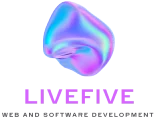The turn of the millennium was a unique time in the world of design. It was an era marked by a sense of optimism, a fascination with the digital future, and a distinctive style that has come to be known as the Y2K aesthetic. Today, as we find ourselves two decades into the new millennium, there’s a growing resurgence of this early 2000s style in web design. This web design trend is emphasized by its nostalgic wave, bringing back retro typefaces, pixelated fonts, and custom cursors, while infusing modern websites with a touch of millennium-era charm. In this post, we’ll explore how the Y2K aesthetic is influencing current web design and why it’s more than just a trip down memory lane.
Understanding Web Design Trends: The Y2K Aesthetic
The Y2K aesthetic is characterized by its bold use of color, futuristic motifs, and a playful blend of digital and analog elements. It was a time when the internet was still in its infancy, and web design was largely uncharted territory. This era’s aesthetic was marked by a sense of experimentation and a bold approach to design.
Key Elements of the Y2K Aesthetic in Web Design
-
- Retro Typefaces: Think bold, chunky fonts that seem to shout for attention. These typefaces are reminiscent of the early days of digital design, where the emphasis was on making a statement.
-
- Pixelated Fonts: The pixelated look, once a necessity due to technical limitations, is now a stylistic choice. It evokes a sense of nostalgia for the early days of digital art and web design.
-
- Custom Cursors: Custom cursors, often playful and animated, add an interactive element to web pages, harking back to a time when personalization and fun were key aspects of web design.
-
- Vibrant Colors and Gradients: The Y2K aesthetic is known for its use of bright, often neon, colors and bold gradients, reflecting the era’s optimistic outlook on the digital future.
-
- Geometric Shapes and Patterns: Geometric shapes and patterns, often used in backgrounds or as design elements, add a sense of structure and futurism to the design.
The Appeal of Nostalgia in Web Design
Nostalgia has a powerful pull. It evokes memories and emotions, creating an instant connection with the audience. In a digital world that can sometimes feel sterile and impersonal, the Y2K aesthetic brings a sense of warmth and familiarity. It’s a reminder of a simpler time in digital history, before the ubiquity of smartphones and social media.
Why Nostalgia Works
-
- Emotional Connection: Nostalgic design can evoke fond memories, creating an immediate emotional connection with the audience.
-
- Differentiation: In a sea of modern, minimalist designs, the Y2K aesthetic stands out. It’s a bold departure from current trends, making it a powerful tool for brands looking to differentiate themselves.
-
- Playfulness: The Y2K aesthetic is inherently playful and fun. It can make websites feel more approachable and engaging, breaking the monotony of standard design templates.
Incorporating the Y2K Aesthetic into Modern Web Design
While the Y2K aesthetic is distinct, it doesn’t have to be all-encompassing. Here are some ways to incorporate elements of this style into modern web design:
-
- Use Retro Typefaces Sparingly: A bold Y2K font can be a great choice for headings or call-to-action buttons, but it’s best used in moderation to avoid overwhelming the user.
-
- Incorporate Pixel Art: Pixel art can be used as a decorative element, in backgrounds, or even as icons, adding a touch of retro charm without dominating the design.
-
- Custom Cursors for Interactivity: Custom cursors can be a fun way to enhance user interaction, especially for creative or personal websites.
-
- Play with Colors and Gradients: Use vibrant colors and gradients to add energy and dynamism to your design, while still keeping it modern and clean.
-
- Geometric Shapes as Design Elements: Geometric shapes can be used in a contemporary way, blending the old with the new to create something uniquely appealing.
The Future of Web Design: Looking Back to Move Forward
The resurgence of the Y2K aesthetic is more than just a passing trend; it’s part of a larger movement in design that values individuality, playfulness, and emotional connection. As we move forward, we can expect to see more of this blending of past and present, as designers continue to explore new ways to create engaging and memorable web experiences.
Conclusion: Embrace the Past to Innovate the Future
The Y2K aesthetic reminds us that web design is not just about functionality; it’s also about expression, emotion, and experience. By embracing elements of this nostalgic style, designers can create websites that are not only visually striking but also emotionally resonant.
At LiveFive Web Design, we’re excited about the possibilities that this retro revival presents. Our team is skilled in blending the old with the new, creating websites that are both innovative and nostalgic.
Ready to Add a Touch of Y2K to Your Website?
If you’re looking to infuse your website with the unique charm of the Y2K aesthetic, reach out to us at LiveFive Web Design. Let’s work together to create a website that stands out, connects with your audience, and takes a bold step into the future.
Contact LiveFive Web Design today, and let’s bring the vibrant energy of the early 2000s to your digital presence.






